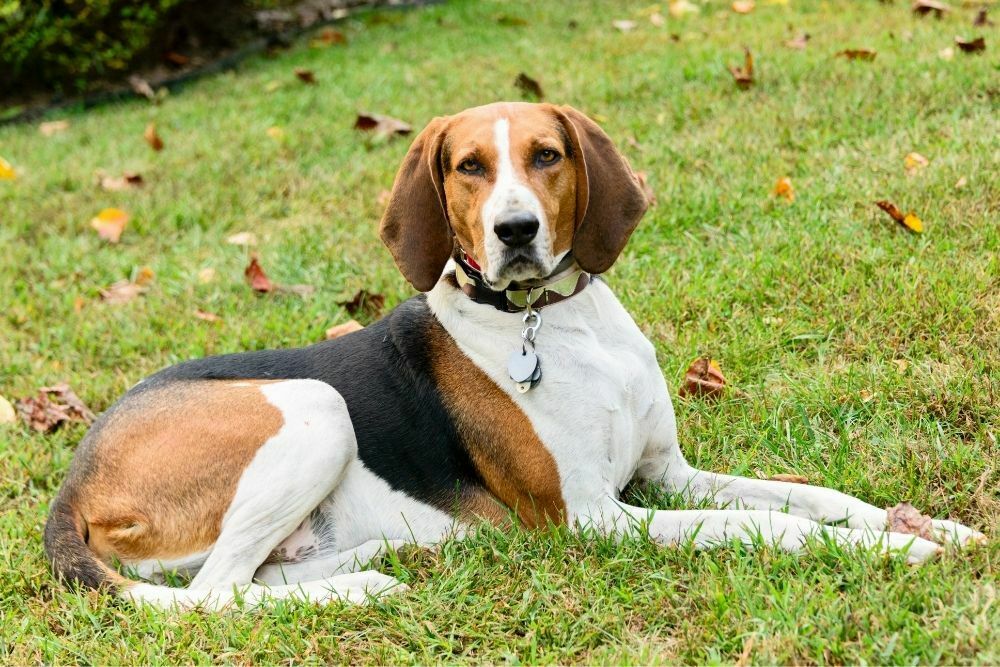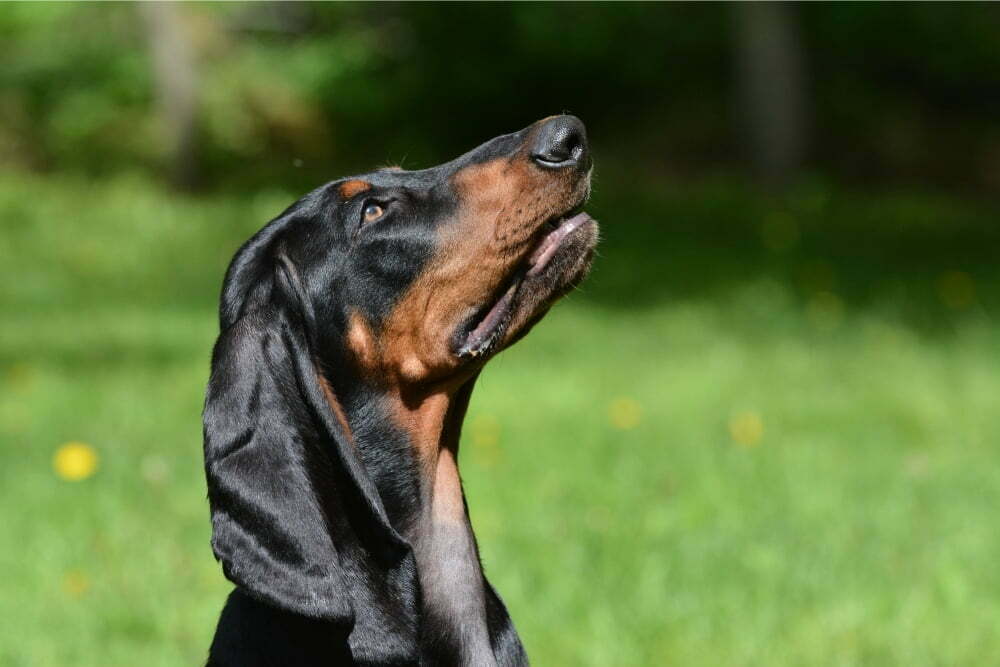
Coonhounds, as the name suggests, were bred to hunt for raccoons. There are many different breeds of coonhound. They include the black and tan coonhound, bluetick coonhound, Plott hound, and the redbone coonhound.
They are an American-English breed with a stubborn temperament and a huge amount of energy. They have very strong hunting instincts and this coupled with their determination means that they can be hard to train.
They are loud dogs and it takes a lot to tire them out adequately. When given the choice, they will hunt all night instead of settling into their bed for a nap. They are a very sociable breed and will become lonely without companionship.
They can become bored very easily, and will follow their hunting instincts as soon as they get a whiff of something. People can misinterpret this as the dog misbehaving or being stubborn, but in reality, they are simply following their instincts.
How do you keep a coonhound busy?
There are many ways that you can keep your coonhound busy. It is important to keep them mentally and physically stimulated to ensure they do not become bored. Signs of boredom in coonhounds can include a lazy or apathetic attitude, barking, and whining.
An easy way to keep your coonhound busy is to take them out with you whenever you leave the house. Even if you are just running errands, the new environment coupled with light exercise will help to stimulate your dog.
If you notice them getting bored while you are trying to watch TV, throwing a toy for them should be sufficient. This will keep them occupied and requires minimal effort on your behalf.
There are many toys available on the market to eliminate boredom in dogs, particularly those who are left home alone while you are working. These include chew toys and those that hold treats, like Kong toys. There are also many different puzzle toys that will stimulate your dog’s mind.
You may also like to consider playing games with them. You could create your own agility course and train your dog to run around it. This engages their natural agility and will entertain them greatly.
Alternatively, you could play some hunting games with them. This works on their natural hunting instincts and will be a game that your coonhound enjoys a lot.

How do you discipline a coonhound?
Before you bring a coonhound into your home, you should understand their demeanor. They will have strong hunting instincts and are very energetic, so be prepared for a more difficult training experience. If you begin to struggle, we recommend contacting a professional dog trainer for further advice.
You should keep your coonhound on a leash until you are sure that they are correctly trained. They will naturally want to run off after any scents they pick up and are very likely to ignore your calls. As you train them more, you can let them off the leash.
It is very important to be firm with your coonhound when they do something that is unacceptable. Stop what you are doing and firmly say, “No, stop it” to them.
Conversely, when they exhibit displays of good behavior you should compliment them and reward them. This could be in the form of verbal praise, physical contact, playing with toys, or giving them a treat.
The most important aspect of discipline is respect. Never allow your dog to have the upper hand. Remain firm and consistent with the way you treat them and over time they will learn to behave appropriately.
How do you potty train a coonhound?
You should start your potty training journey when your puppy is between 8 and 12 weeks old. This is when they will be most receptive to the training and is the ideal time to lay the groundwork for appropriate behavior for the rest of their life.
Some people choose to use a large crate to potty train their pup. This may seem unfair, but it is highly effective.
The crate should be large enough for your pup to turn around with ease but should be small enough to mean that if they go to the bathroom, they cannot rest far away from it. Dogs are very hygienic animals and will not want to stay near their own waste.
Keep a close eye on your puppy for sniffing, squatting, and circling. These are all indications that your dog is about to pee. As soon as you see this, take your puppy outside immediately and show them an acceptable toilet area. Give them a lot of praise when they go to the toilet outside to reinforce this behavior.
To make the process even simpler, try and stick to a rough schedule or routine. Try to feed and walk your dog at the same time each day, and eventually, they will become used to it. This will make the potty training process much easier.
We recommend taking your coonhound for a bathroom break 2 hours after you feed them and every time they have finished playing. Soon your dog will be letting you know when they are ready to go potty.
How do you train a coonhound to come when called?
When training them, we recommend keeping them on a long line. This means that they cannot travel too far from you, but still retain some independence. As you are walking them, use your vocal command and a happy tone of voice. This will begin to build associations in your dog’s brain.
Keep some dog treats handy and reward your dog with them when they come to you. Continue to repeat this process over and over until you reach the full extent of your long line. Try to pick times when they are not sniffing the ground to use the command. This is when they will be most receptive and responsive.
If they do not come, do not just keep calling. Either gently pull the long line back in to guide them towards you, or go over and tell them ‘no’. They must learn that failing to respect commands has consequences.
